Gluten is delicious…especially when it creates the perfect chewy sourdough focaccia bread slathered in olive oil, olives, and fresh rosemary.
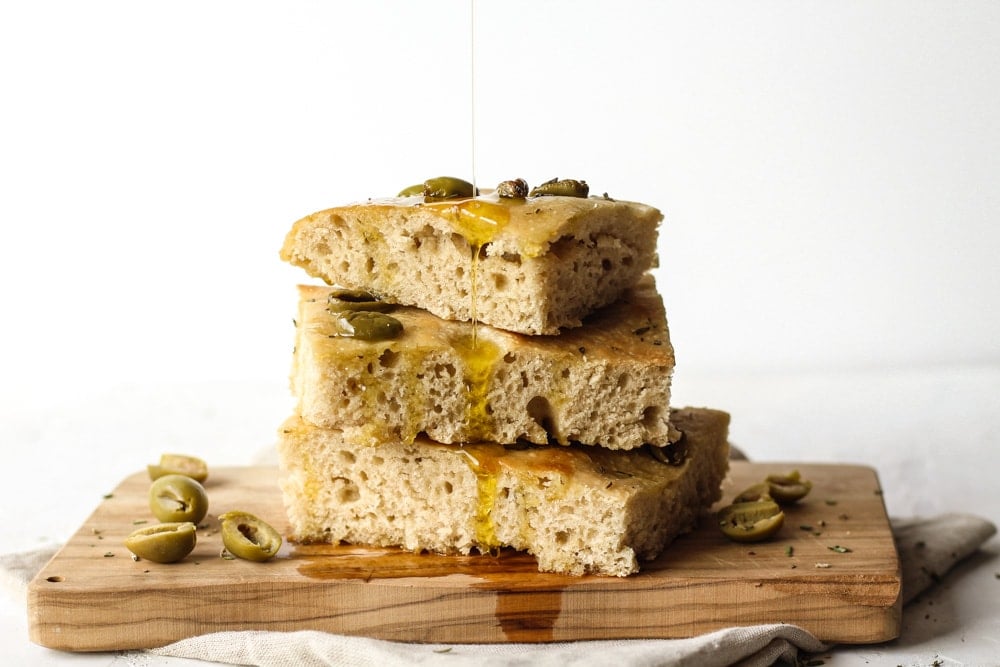
If I have derailed you from your Whole 30, Paleo, or Keto eating plan, then I’m sorry. Let this be your cheat day bread if that’s the case.
I totally respect your eating routine, as we all need to clean up our diets, but there is absolutely positively no substitute for good ‘ole bread flour (preferably organic), a sourdough starter, and long fermentation to transport you to Italy in just one bite.
This focaccia bread is deceptively easy to make, particularly because the shaping of the dough requires only a gentle stretching of the dough on a sheet pan.
Another reason for the ease of bringing this luscious focaccia bread together is that it doesn’t require a lot of kneading, by hand or by machine. Your only aim is to bring the dough together until it’s a nice sticky dough, then you let the long fermentation do the work for you.
If you want to serve this for dinner, start the dough in the morning, ferment it all day, then shape, proof, and bake it right before dinner.
Think of it like bringing together a crockpot dinner. Mix the dough in the morning, and it’s pretty much hands-off until you are ready to bake it.
And if you are still intimidated by the process, let the copious amount of photos and quick 1-minute step-by-step video show you just how easy it really is!
WHY DO YOU ADD DRY YEAST TO SOURDOUGH FOCACCIA BREAD?
A lot of the artisan bread recipes here on Bessie Bakes use a sourdough starter exclusively to ferment the bread. However, there are some occasions when using a bit of dry yeast and a sourdough culture together is a great idea.
Because a sourdough culture/starter doesn’t deliver quite the rise to breads as well as dry yeast does, the only way to make sure you get a nice oven spring is to either add a larger amount of sourdough culture to your dough, or add some dry yeast to ensure you get the just the right texture on the interior of the bread.
I wanted the sourdough flavor to be a gentle accent in the background of the focaccia bread, and adding enough starter to make it rise sufficiently would have resulted in a too-sour sourdough focaccia, which I didn’t want.
WHAT KIND OF DRY YEAST DO YOU USE FOR ARTISAN BREAD
Professional bakers use Instant Dry Yeast, which means it can be used “instantly”, in that it doesn’t need to be “proofed” in warm liquid first.
In the grocery store, this same kind of yeast is labeled Rapid Rise Yeast. You can add this type of yeast directly to the dough with the rest of the ingredients as you’ll see in the video below.
Active Dry Yeast needs to be “activated” with warm liquid, so it’s an extra step. If this is the only yeast you have at home or can find at the grocery store, then, by all means, use it. Just “proof” the yeast in some warm water first until it’s nice and bubbly before you add it to the dough.
SOURDOUGH OLIVE FOCACCIA BREAD VIDEO (1 MINUTE)
LET’S BAKE!
The dough only needs to be kneaded in a stand mixer (with a bread hook) or by hand until the dough is nice and sticky.
Once the dough is ready, place it on a work surface and do a “fold” in order to help strengthen the dough.
Stretch the left side of the dough toward the center, then the right side toward the center, then the top of the dough toward the center, then the bottom toward the center, then flip over and place back in the mixing bowl that has been oiled first.
Watch the video for a visual tutorial of how to do a fold.
Below is what the dough will look like after it has fermented for 6-8 hours. It will have doubled in size and be nice and puffy.
SHAPING & PROOFING FOCACCIA BREAD
Remove the dough from the bowl and place on an oiled parchment-lined sheet pan. Gently stretch the dough to the shape of the pan. Cover, and let proof in a warm area for about 90 minutes.
You can proof the dough on top of your oven with the oven turned on to about 350 degrees, obviously with the burners turned off. This will create a nice warm space for your dough.
Once the dough is proofed, it will be nice and puffy, but will not double in size as you can see below.
Spread olive oil over the surface of the dough with your hands and put gentle indentions with your fingers into the top of the dough.
Sprinkle green or black olives and fresh chopped rosemary on top then bake that baby up!
More Sourdough Bread Recipes from Bessie Bakes
Easy Sourdough Bread Recipe with shaping, proofing, and baking video
The Lazy Baker’s Guide to Caring For a Sourdough Starter
Pin this post on Pinterest
Bon Appetit Ya’ll,
Leslie O.
Sourdough Focaccia Bread | Olives & Rosemary
Ingredients
- 5 cups Bread flour 800 grams
- 1 1/3 cups plus 1 Tbsp All purpose flour 220 grams
- 3 tsp. Salt 19 grams
- 1/2 cup Ripe Sourdough Starter 130 grams
- 1/4 cup plus 2 Tbsp. Olive Oil, plus more for greasing the top of the dough and the mixing bowl 68 grams in the dough when mixing
- 1/2 tsp Dry Instant Yeast or Rapid Rise Yeast (doesn't need to be activated in warm water, see notes below) 2 grams
- 2 1/2 cups plus 2 Tbsp. room temperature Water, may need up to 1/4 cup more if it's dry
- 1 cup Green or Black Olives, sliced about 110 grams
- 2 Tbsp (approx) Fresh Rosemary Chopped
Instructions
Mixing and Fermenting the Dough
- Add the bread flour, all purpose flour, salt, dry yeast, ripe sourdough starter, olive oil, and water to a stand mixer bowl with the bread dough attachment hook or a large mixing bowl. With the mixer on the first speed, mix the ingredients until it forms a sticky dough that pulls away from the sides of the bowl. You may need to add up to 1/4 cup water (with the mixer turned on) if the dough is dry and isn't too sticky. This is common in the winter as flour tends to absorb more liquid when it's cold outside, making the dough drier. If mixing by hand, mix all the ingredients with a wooden spoon until they start to come together, then place on a work surface (no need to flour), and knead until the dough comes together in a sticky ball. Add a touch of extra water and knead until combined if the dough is dry. Use a bench scraper to scrape up the excess dough and knead it back into the ball of dough.
- Give the dough a fold (watch the video for how to do that) and flip over. Wipe the mixing bowl and grease with olive oil and place the dough back in it. Cover with parchment paper and place in a warm spot in your kitchen to ferment for 6-8 hours. The timing doesn't have to be exact. The longer you ferment it, the more flavor develops. You just want it to have doubled in size and be nice and puffy.
Shaping the Dough
- Line a sheet pan with parchment paper and grease with olive oil. Place the dough on the sheet pan and gently stretch with your fingers to the size of the sheet pan, being careful not to tear the dough. Cover with plastic wrap and proof for about 90 minutes, or until the top is nice and puffy. It WON'T double in size, but will be soft on the surface and will spring back a bit when it's ready. You can proof the dough on top of the oven (burners off!) with the oven turned on to 350 degrees to create a warm space for it to proof.
Baking the Dough
- Preheat the oven to 425 degrees. When it's proofed, remove the plastic wrap and drizzle olive oil on the surface and coat the top evenly with olive oil spreading gently with your hands. Gently make indentions with your fingers on the top of the dough. Sprinkle the olives, chopped fresh rosemary over the top, and additional sea salt (salt is optional).
- Bake for 22-27 minutes, or until the top is golden brown. Let cool a bit and slice the focaccia with a serrated knife and serve warm with more olive oil. YUM!

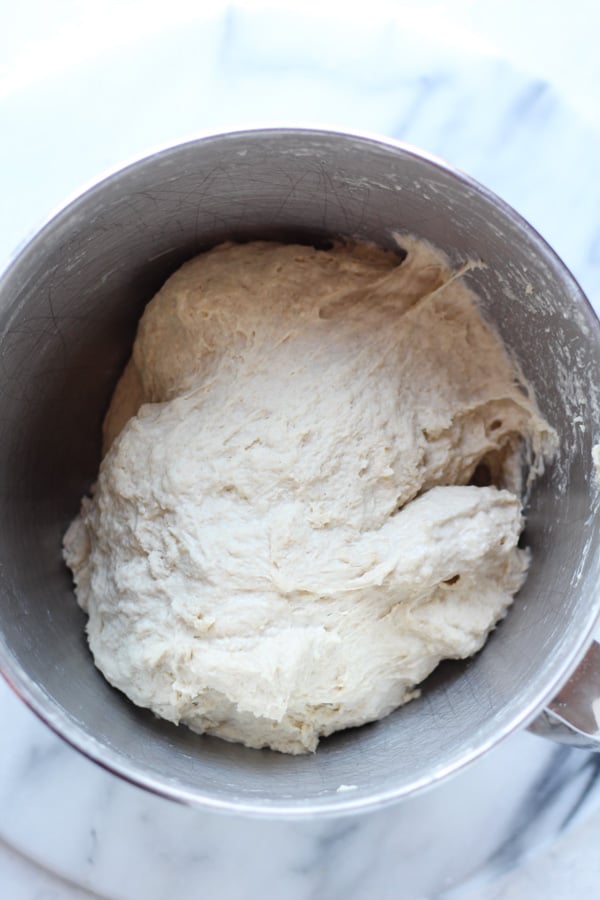
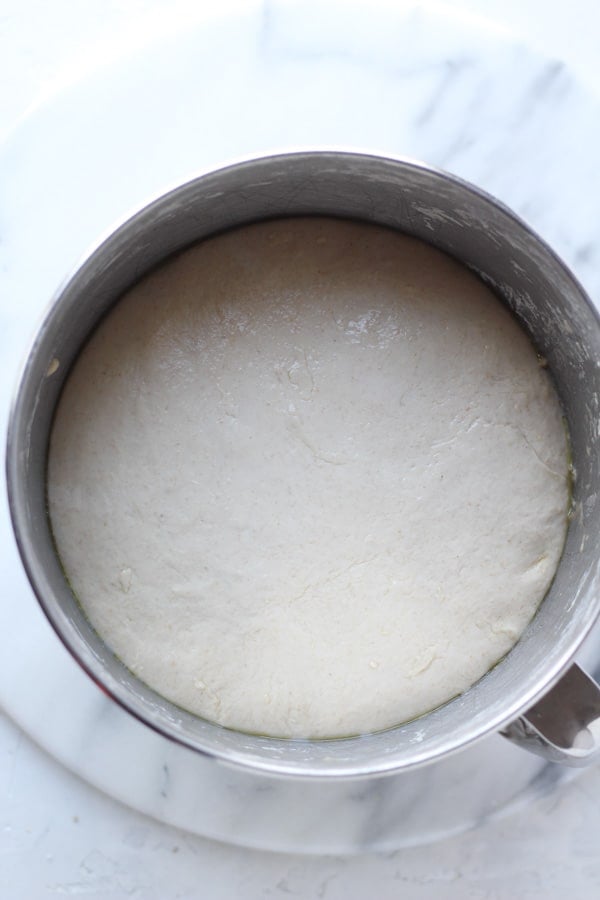
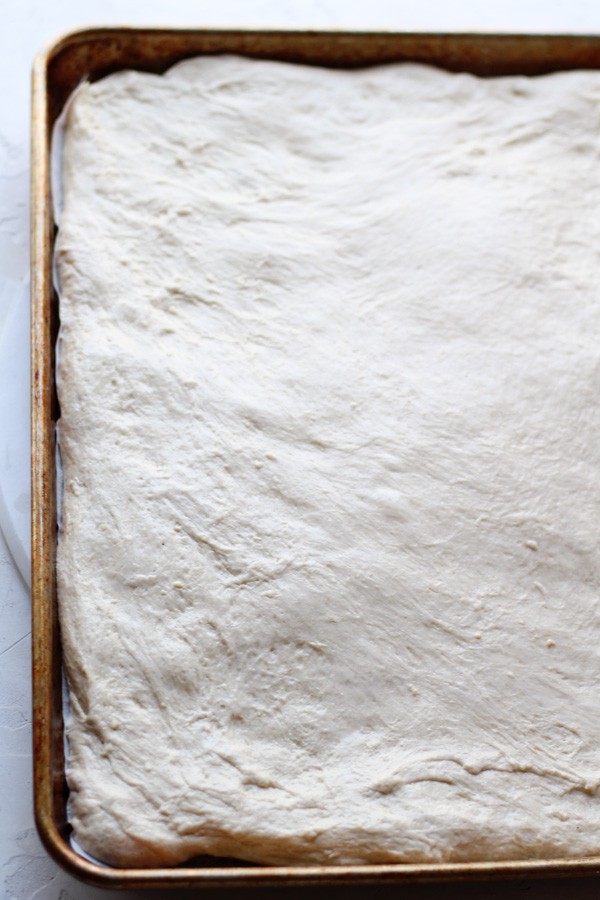
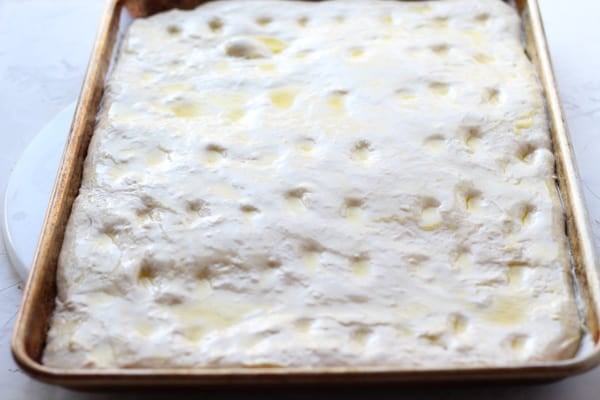
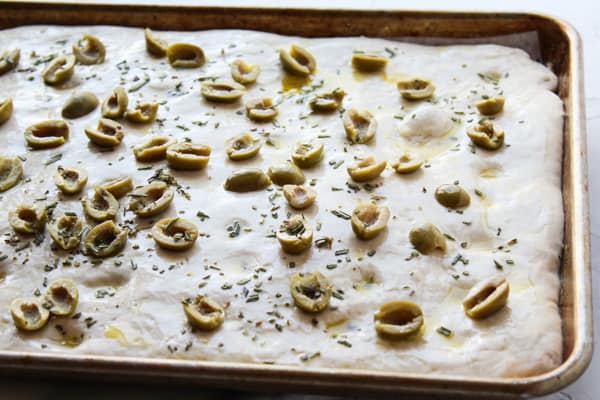
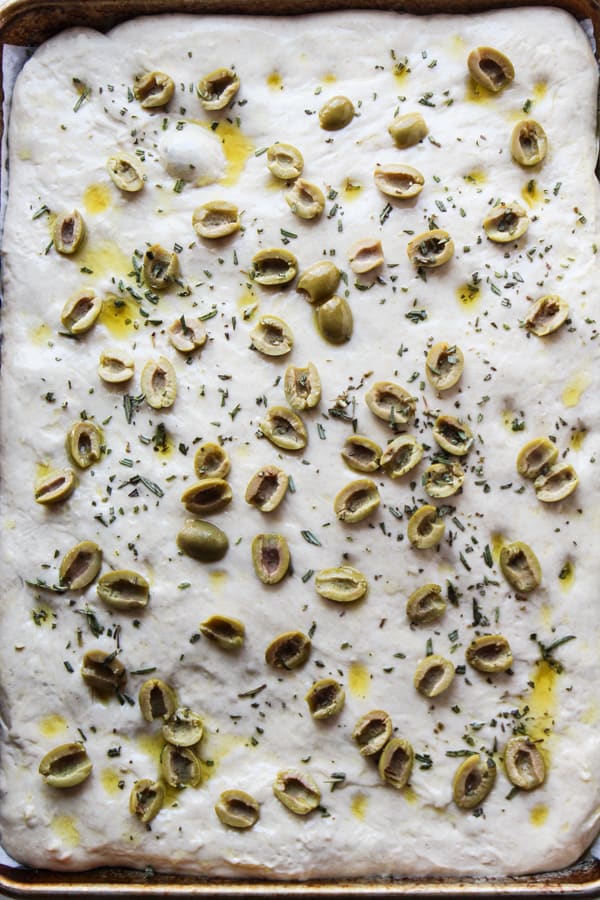
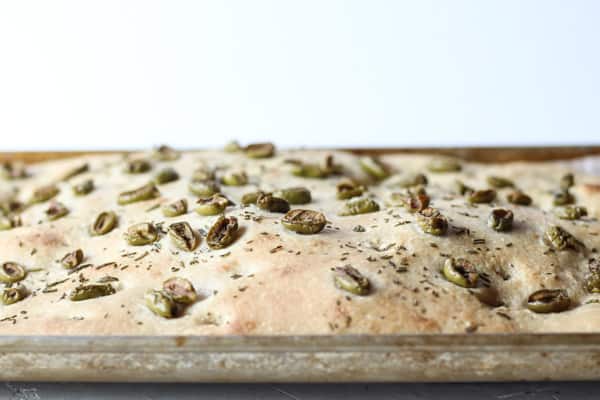
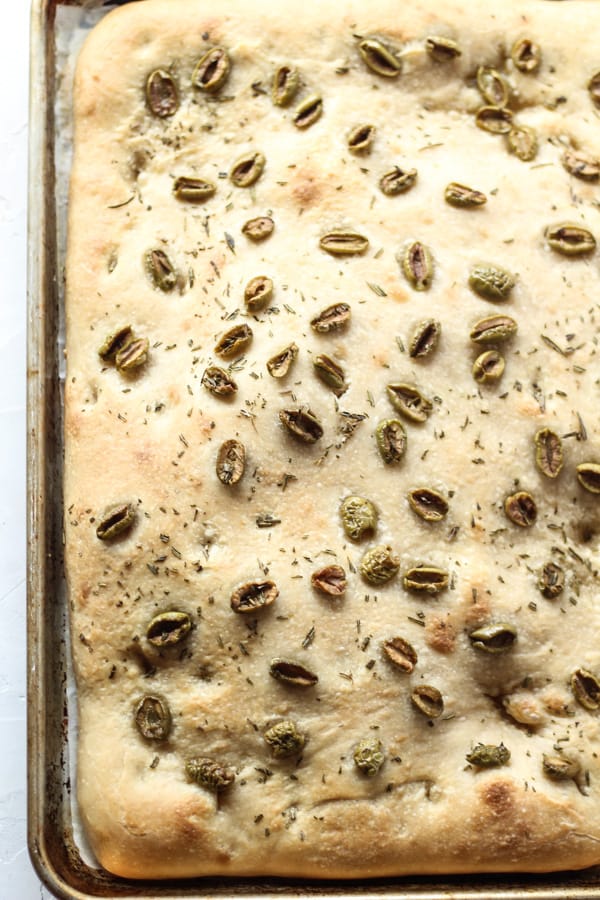
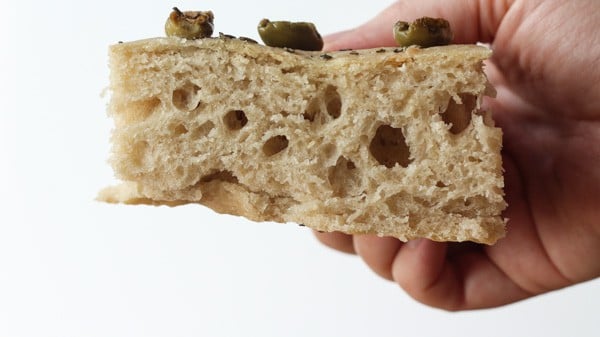
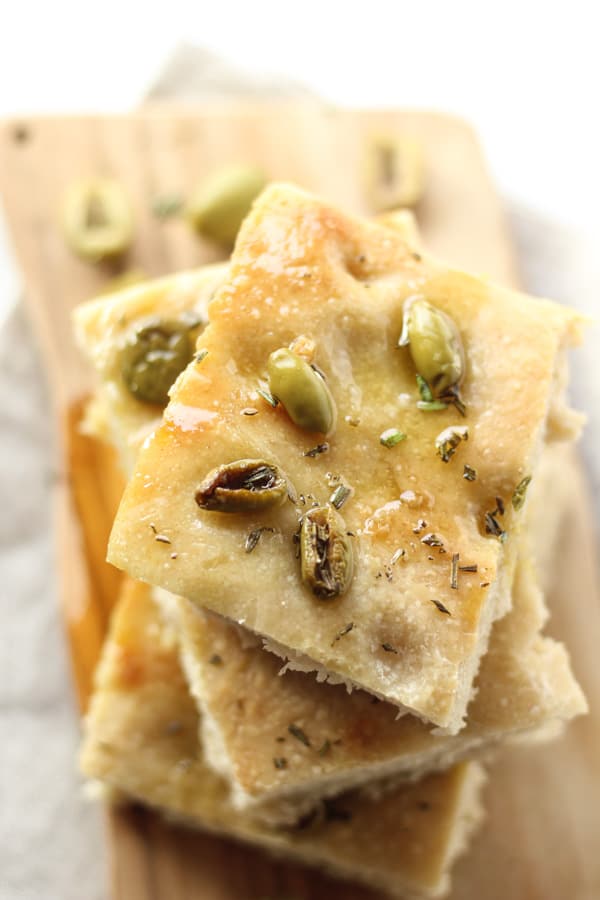
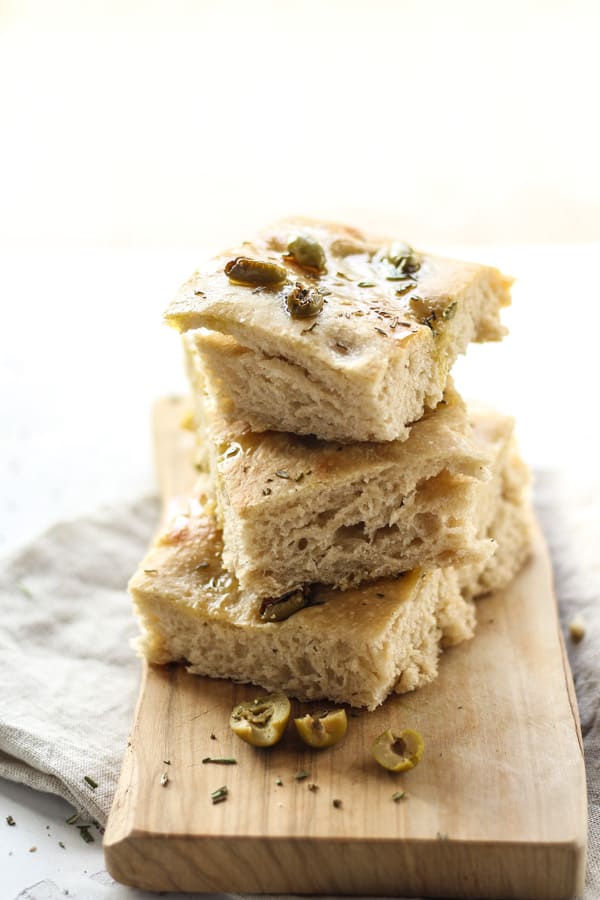
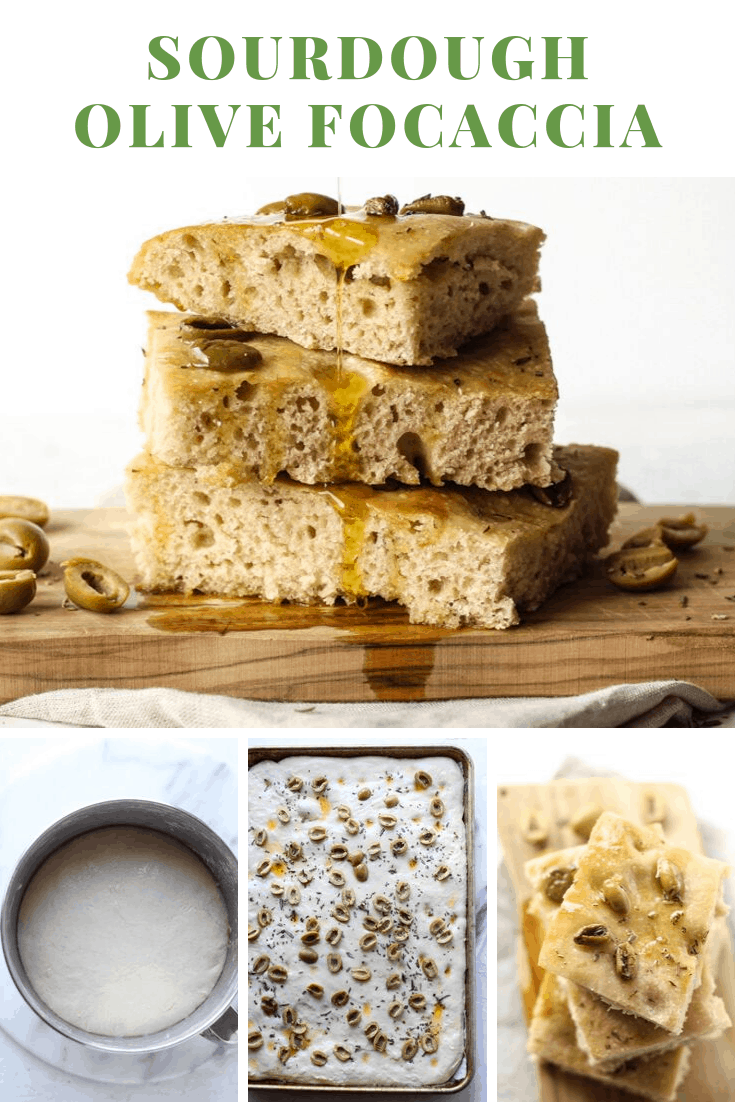
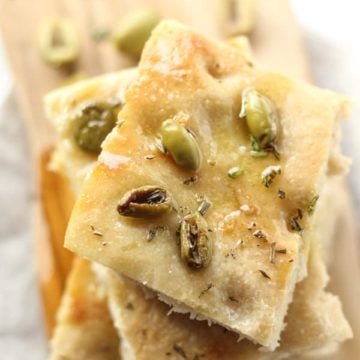
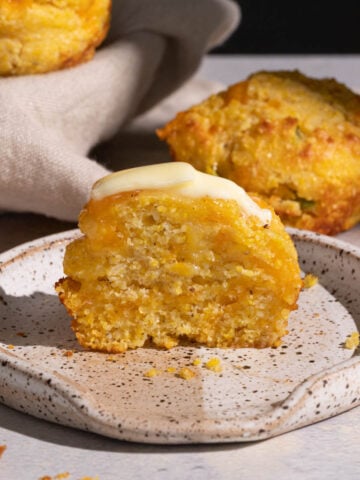
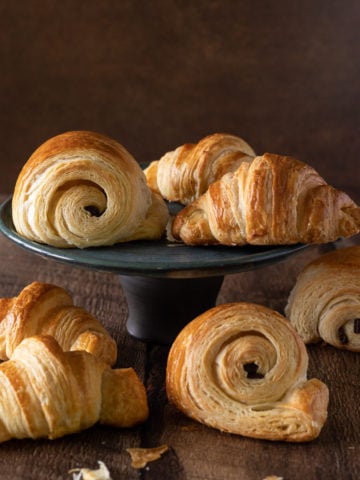
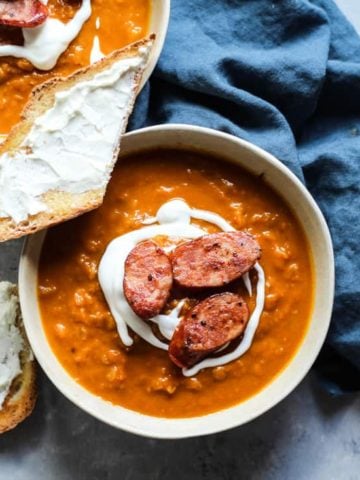
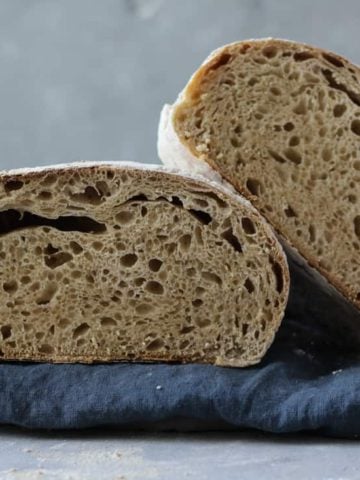
Just made this. YUM! I didn’t have yeast so I increased the starter to one cup and reduced the water by a half cup. Turned out great with a perfect crumb. Got many compliments!
Thank you so much for sharing your experience! I’m glad the recipe worked using only sourdough as your yeast.